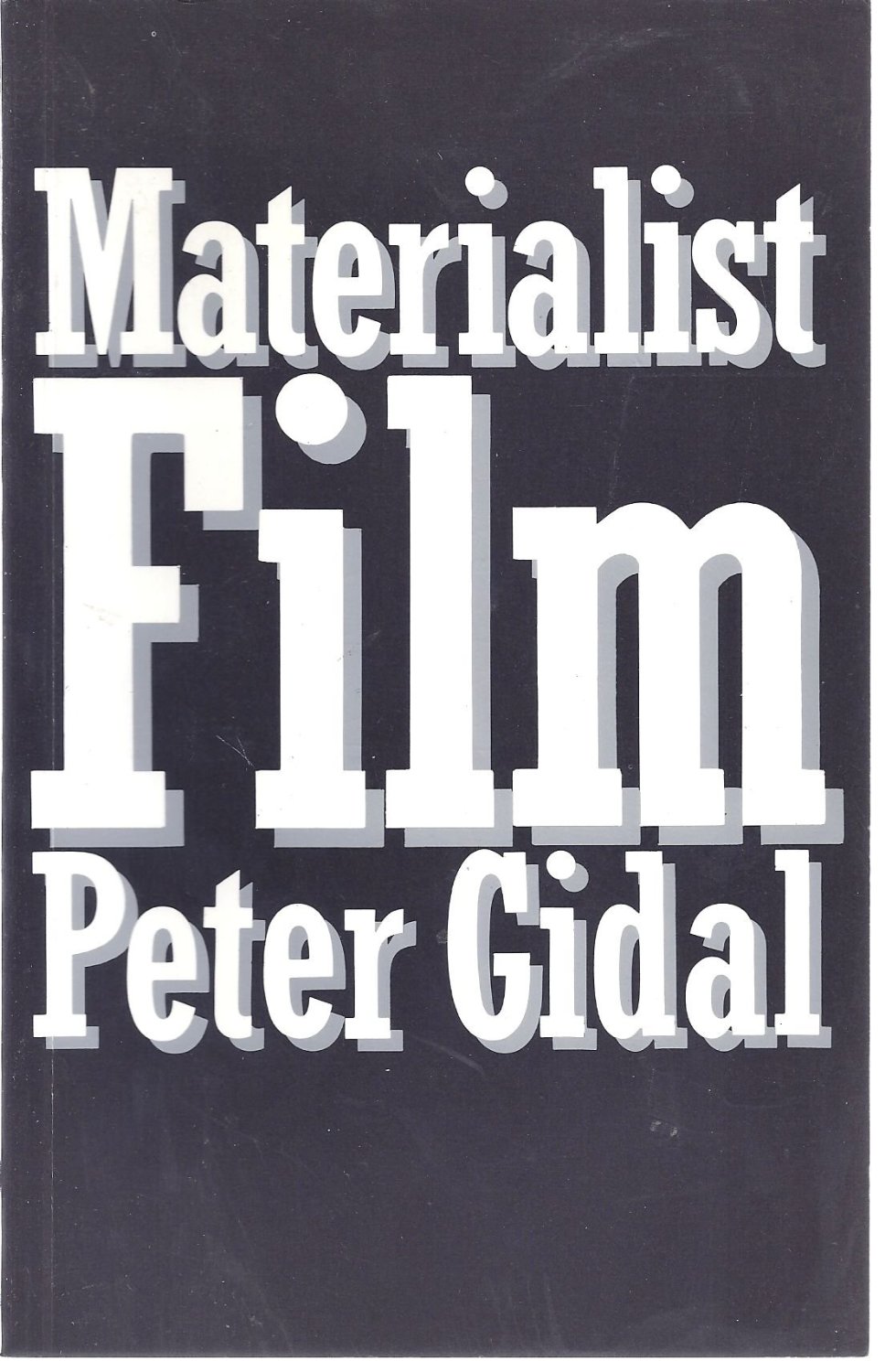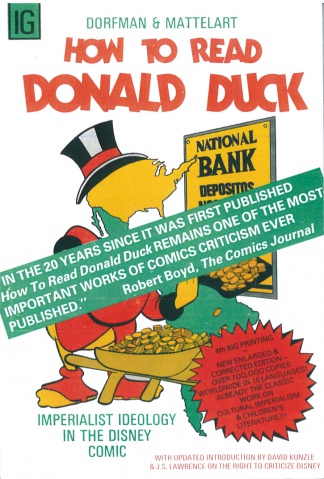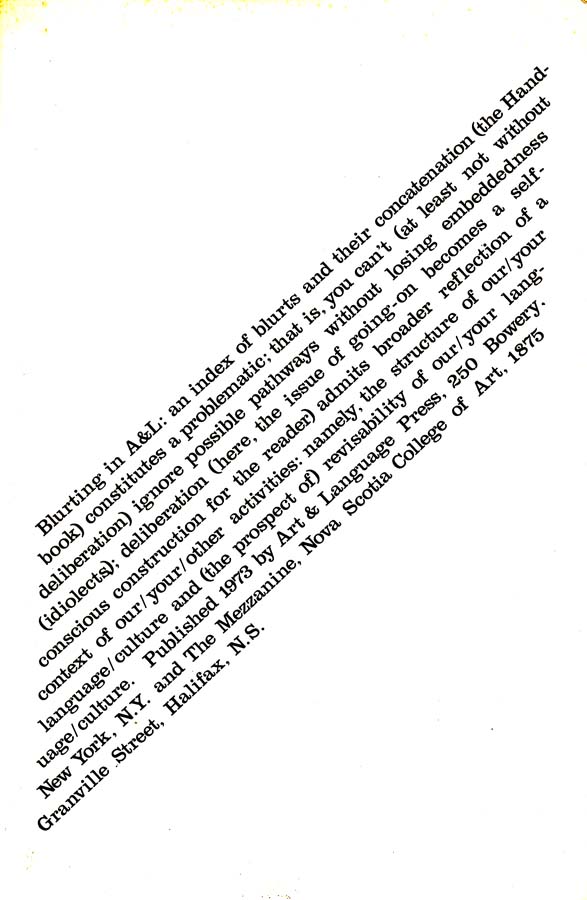Peter Gidal: Materialist Film (1989)
Filed under book | Tags: · abstraction, aesthetics, avant-garde, bourgeoisie, cinema, experimental film, film, film history, ideology, illusion, image, meaning, narrative

“A polemical introduction to the avant-garde and experimental in film (including making and viewing), Materialist Film is a highly original, thought-provoking book.
Thirty-seven short chapters work through a series of concepts which will enable the reader to deal imaginatively with the contradictory issues produced by experimental film. Each concept is explored in conjunction with specific films by Andy Warhol, Malcolm LeGrice, Lis Rhodes, Jean-Luc Goddard, Rose Lowder, Kurt Kren, and others.
Peter Gidal draws on important politico-aesthetic writings, and uses some of his own previously published essays from Undercut, Screen, October, and Millennium Film Journal to undertake this concrete process of working through abstract concepts.”
Publisher Routledge, 1989
ISBN 0415003822, 9780415003827
189 pages
via maxp
Review: Wheeler Winston Dixon (Prairie Schooner, 1990)
PDF (10 MB, updated on 2016-12-24)
Comment (0)Ariel Dorfman, Armand Mattelart: How to Read Donald Duck: Imperialist Ideology in the Disney Comic (1972–) [ES, IT, EN, PT, TR]
Filed under book | Tags: · capitalism, colonialism, comics, cultural criticism, entertainment, ideology, literary criticism, marxism, political theory, politics

How to Read Donald Duck is a Marxist political analysis by Ariel Dorfman and Armand Mattelart on what they perceive is cultural imperialism in popular entertainment, published in Chile in 1972. Written in the form of essay (or, in the authors’ words, a “decolonization manual”), the book is an analysis of mass literature, specifically the Disney comics published for the Latin American market. It is one of the first social studies of entertainment and the leisure industry from a political-ideological angle, and the book deals extensively with the political role of children’s literature. (from Wikipedia)
First published by Ediciones Universitarias de Valparaíso, Chile, 1972
First published in English in 1975
Translated and with an Introduction by David Kunzle
With Appendix by John Shelton Lawrence
Publisher International General, New York, 1991 (Fourth printing)
ISBN 0884770370
119 pages
via Quaxo Coricopat
An interview with Mattelart in which he shortly discusses the book (2008, in English)
2012 project for appropriation of the book (includes its online edition)
Para leer al Pato Donald. Comunicación de masa y colonialismo (Spanish, 18th ed., 1972/1979)
Come leggere Paperino. Ideologia e politica nel mondo di Disney (Italian, trans. Gianni Guadalupi, 1972, added on 2023-7-31)
How to Read Donald Duck: Imperialist Ideology in the Disney Comic (English, trans. David Kunzle, 1975/1991, 10 MB, updated 2015-5-10)
Para ler o Pato Donald: comunicação de massa e colonialismo (Portuguese, trans. Álvaro de Moya, 2nd ed., 1976/1980)
Emperyalist Kültür Sanayii ve Walt Disney: Vakvak Amca Nasıl Okunmalı? (Turkish, trans. Atilla Aksoy, 1977)
Blurting in A & L [Art & Language] (1973/2002) [English/German]
Filed under book | Tags: · ambiguity, anthropology, art, art criticism, art system, autonomy, conceptual art, experience, ideology, knowledge, language, learning, mapping, philosophy, theory, translation, work

Blurting in A & L is a printed booklet whose content is a dictionary with blurts or ‘annotations’. The annotations were written by the members of Art & Language Ian Burn, Michael Corris, Preston Heller, Joseph Kosuth, Andrew Menard, Mel Ramsden and Terry Smith.
“The project began as a collaboration among Art & Language members in New York City. In weekly meetings from January to July 1973, eight participants produced written statements called ‘annotations’ or ‘blurts’ on topics ranging from the ordinary to the abstruse (art, learning, ambiguity, heuristics, stimulus-meaning). In each subsequent meeting the group would return with new statements that ‘went on’ from the last week’s annotations. In the end, through the efforts of Michael Corris and Mel Ramsden the comments were compiled in a handbook. In all, some 400 odd entries were edited and grouped according to subheadings with vague quasi-logical connectors linking them to one another.
Since the connections among the entries were many-to-many, readers could choose their own course through the material, which blurred the boundary between passive reader and active participant. This was a key ideology of Art & Language – the idea that membership was permeable or, as one participant put it, ‘a function of participation’.” (from a commentary by Chris Gilbert, Mute, 2002)
An online version installed by ZKM, Karlsruhe, in 2002 includes articles which contextualize Blurting in A & L within the activities of the group in the 1970s. Present and former members of Art & Language (Michael Baldwin, Michael Corris, Philip Pilkington, Mel Ramsden) summarize and reflect on their activities. Thomas Dreher embeds Blurting in A & L within the proceedings of the discourse of Art & Language.
Blurting in A&L: An Index of Blurts and Their Concatenation (the Handbook) Constitutes a Problematic; That Is, You Can’t (at Least Not Without Deliberation) Ignore Possible Pathways Without Losing Embeddedness (Ideolects); Deliberation (Here, the Issue of Going-On Becomes a Self-Conscious Construction for the Reader) Admits Broader Reflection of a Context of Our/Your/Other Activities: Namely, the Structure of Our/Your Language/Culture and (the Prospect of) Revisability of Our/Your Language/Culture
Edited by Michael Corris, Mel Ramsden
Publisher Art & Language Press, New York, and The Mezzanine, Nova Scotia College of Art, Halifax, 1973
92 pages
Online version and accompanying publication edited by Thomas Dreher, 2002.
Announcement of the hypertext version (Syndicate, 2002)
Blurting in A & L (1973, HTML)
Blurting in A & L Online (English, 2002, HTML)
Blurting in A & L Online (German, 2002, HTML)

